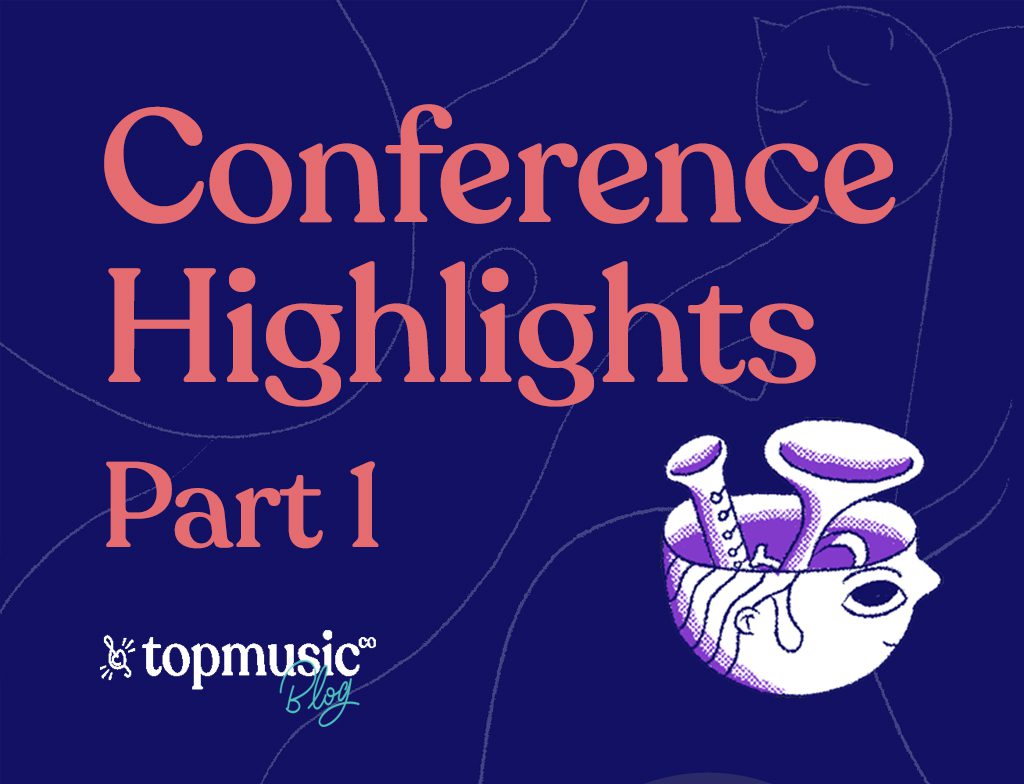High points from the first Piano Pivot Live conference
An amazing conference happened last week in Melbourne, and I almost missed it.
In the season of life I’m in (busy mom running a studio which is currently going full-tilt), I didn’t have the bandwidth to cancel lessons and attend Piano Pivot Live in Melbourne in person this year. Also living in Texas, it’s 8,965 miles away from me (which didn’t stop fellow Texan Martha Hilley from attending though!)
In this article, I’ll share some of the highlights of the conference with you (thank you, pro recordings) and insights I gained from afar, which proves the point: attending these events virtually is now a thing!
One tip was flat-out so good – I took notes at 1 pm and presented and taught it at 4 pm the same day to a group class of energetic 3rd graders. (Nicola’s step & skip body movement game – read on for that one.)
Here’s a look at the conference’s best insights, and what stood out to me as fresh and actionable.
Samantha Coates, a well-known author on theory, musicianship, and sight-reading, talked with Gillian Erskine of Piano Teaching Success TV.
Her topic was on the internet and the teaching studio: the good, the bad, and the ugly.
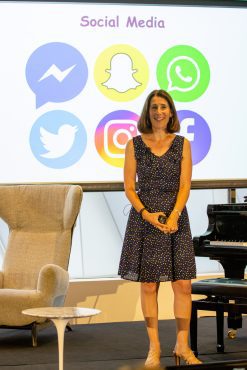
Samantha Coates asks: Are you a digital native?
A question we can ask ourselves: are you a digital native or a digital immigrant? The digital immigrant is a gradual adopter of online media. Or there is that third possibility…. the digital refugee.
Social media has changed teachers’ perceptions. They don’t feel as alone anymore since they can relate to many other teachers online with the same studio experiences.
And teachers are using digital media like never before to take extended ed opportunities regularly, not just once a year at a conference.
Favorite quote:
We’re raising the piano teachers of tomorrow. Our job is to curate the internet for our students. It’s a legacy we’re going to leave for them.
Practically, this is taking rote learning, happening with our students on YouTube with channels like Synthesia, and helping them to learn from that starting point and take them on to note reading.
We can help them discern and curate what’s available musically on the internet. There’s so much free sheet music — how should students play it if it’s too difficult? How can they locate the good and ignore the bad or the ugly?
Samantha’s fresh viewpoint is that in addition to musicianship, we are to be curators of digital content for our students.
Next up, we have a “How I built this” viewpoint from Carly McDonald.
Carly McDonald has created a successful preschool program, centered in Adelaide, and reaching across South Australia. In her Piano Pivot talk, she gets into the learning points of what it’s like to create a niche program from scratch.
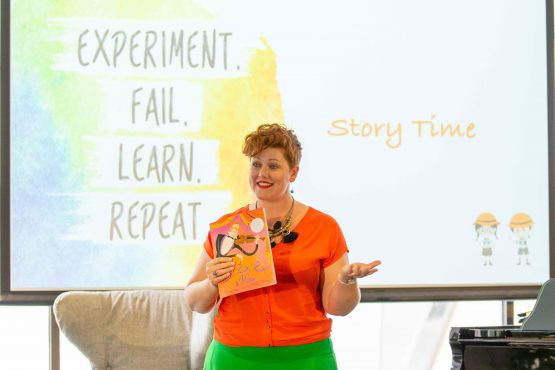
Carly McDonald gives a transparent look into building a program from the ground up.
During curriculum building (which turned out to be a considerable phase), it’s vital to get the right people involved and to brainstorm, then write and rewrite.
Related: Hear Carly’s talk about her preschool program on our podcast.
Carly takes an editor’s viewpoint on program creation:
Experiment, Fail, Rewrite, Repeat.
She knows it’s critical to have enough review stages so you can refine your program building.
For example, if a teacher is beginning to outsource some project work, like building a website, they need to consult steadily with the designer to make sure their authentic voice is present in the results.
Otherwise, you’ve built a product that looks and feels nothing like you, and it falls flat.
Failure is part of the success cycle for niche program builders. Preschoolers model this so well! They try what they’re unfamiliar with, and then try again in a series.
We’ve got to understand when we’re building a program; it won’t turn out exactly as we thought.
Ask yourself, am I going to keep going?
Carly’s viewpoint is that honesty and transparency about the growth process is where the gold lies. In evaluating growth critically, we gain the insights we need to adjust.
Now, what about fresh actual teaching tips, including the one I used instantly last week?
We turn to Nicola Cantan next, coming down from Ireland, and the creative mind behind the Vibrant Music Teaching community and the Colourful Keys website. She is also our expert TopMusicPro program director and teaches privately.
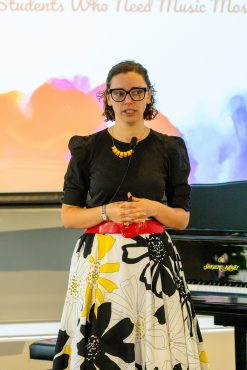
Nicola Cantan presents on getting students moving.
Nicola’s three universal tricks for teachers to get students moving are:
These are games, or “creativizations” — the simplest ones you can imagine, so that teachers can use them immediately once they return to teaching. There’s nothing to study or print out and prep!
We need to make concepts fun for students and get them moving. It’s commonly said that preschoolers need to get moving in lessons. But older students and even teachers also need this.
A quick listening with movement game for intervals:
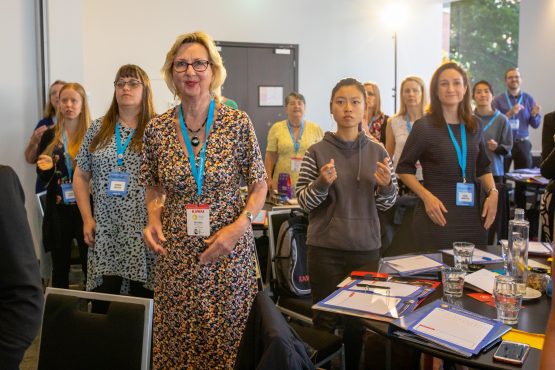
Delegates learning movement-based teaching
(Why this was so much fun? It got my kids up off their seats in a group class, and we had instant action, without difficult props or additional study time for me!)
Another easy game: use a large keyboard mat and place student(s) in the corner of the room. Play an example, and they must race to the correct station/place.
Whole-body learning is so much more engaging than 1,000 words of instruction at the piano keyboard to introduce a topic, while your student’s eyes glaze over.
We end with students back at the piano bench, ready to implement what they just learned.
Finally, Kawai manager Warrick Baker’s words got me thinking hard about my students’ pianos, which makes a more significant impact on lessons success than you’d think.
Warrick Baker, general manager of Kawai Australia, and a major sponsor of Piano Pivot Live is pleased to see teachers working on their personal development at PPL.
He commented this conference is like the TED Talks of the teaching profession.
His key view is thinking about where today’s students are and how they’re learning and engaging with technology. (This was a thread that emerged throughout the conference — the influence of tech on our profession and how it’s changing the field.)
But surely not with pianos? How so?
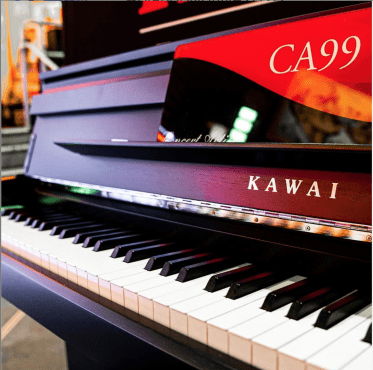
Hybrid pianos are a graceful solution in open-floor plan homes and condos.
Kawai’s new hybrid pianos fit well for modern households. They are for purists that want to play an acoustic instrument and to use technology along with it.
Think about your students’ homes today. They are open-air spaces with everyone together. The dedicated piano rooms of yesterday are gone. Where does the piano fit in this home?
A hybrid piano allows the student to be there and practice without being discouraged to stop making all that noise. They can plug in with headphones on a Kawai hybrid and enjoy their music.
And the technology makes sense, as this is how students are engaging currently, with apps and phones.
Kawai’s new hybrid piano series got me thinking about how to better help families in my recommendations for instruments. And I know if it fits their lives well, they’re more likely to enjoy music study and continue to pursue it.
I hope you’ve found this quick look at Piano Pivot Live refreshing. We are entering a new era where professional development doesn’t have to be once a year, and where you don’t have to miss it all if you were unable to board a plane for Melbourne this year.
The virtual lounge pass for PPL will give you full access to the conference recordings and slides. Take a look here for ticket info.
Special thanks to Gillian Erskine and Paul Myatt of Piano Teaching Success TV by Blackrock Music for producing some incredible Q&A videos with all these speakers and guests. Tune in to their interviews at their channel here.
Stay tuned – I’ll share more insights next week in a part 2 article, including tips from Ruth Power’s wildly popular Instagram strategy talk.
